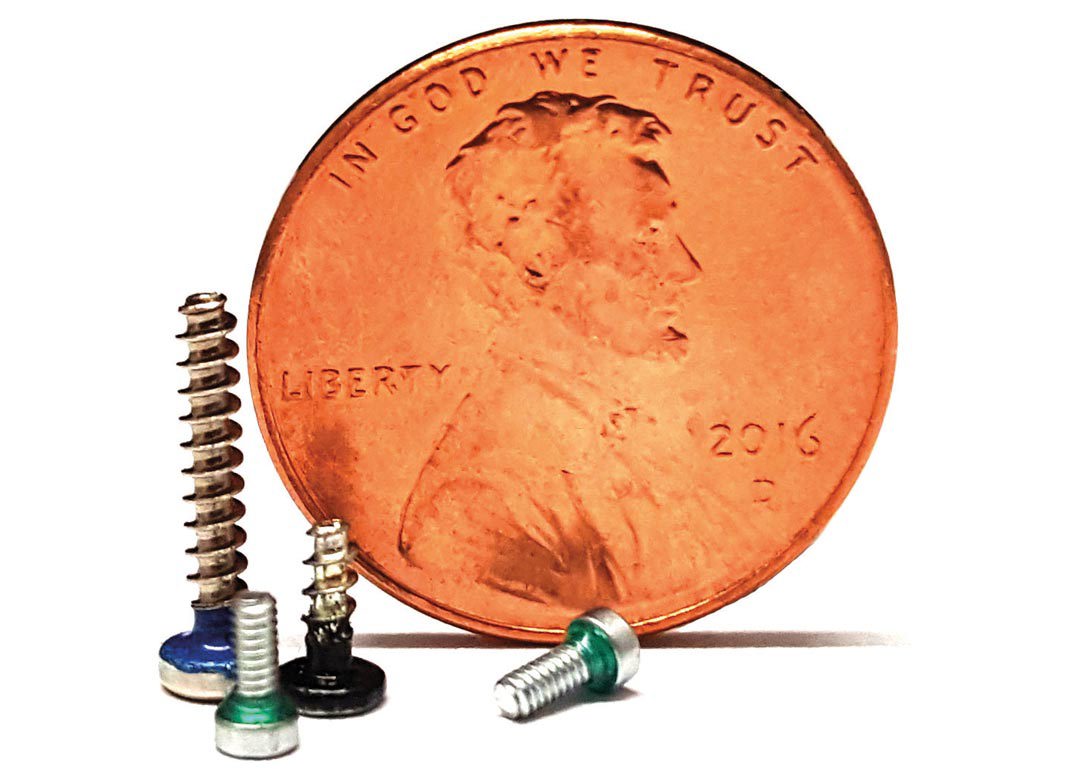
By Mark Thurber, CEO at Maelstrom Chemical Technologies LLC
In today’s world, the realm of personal electronic devices is highly competitive. This industry thrives on fast and furious innovation and requires the highest level of consistency achievable. Mobile phones, tablets, personal electronic devices and their use of high-tech engineering materials have brought with them a great need for specialised fastener adhesives, sealants, coatings and lubricants that can deliver high performance.
Since most people have adopted a smart phone as a lifestyle keystone from school forward, it is completely taken for granted that the materials contained in these gadgets, and facilities where these items are made, must also be as advanced as the final articles themselves. Many electronic items require a clean room environment when they are assembled. Components (such as tiny fasteners), not only within the device, but also within the construction of the assembly room itself, cannot emit even the tiniest particles at any point during their lifetime.
Without proper qualification of materials and assembly, any item with a screen display or lens could be clouded by vapor deposits, memory media may be damaged by particles, and electronics could short circuit from conductive chips. Latent or stray particles, vapors and residues produced by any component in a device can lead to impairment or catastrophic failure of that device, due to optics fogging, corrosion, and contamination or compromise of circuitry.
This is a monumental challenge when components are made from filled plastics and metals, where the slightest frictional contact can produce a loose burr, chip or fiber particle. The seemingly obvious addition of a lubricant can quickly compound the problem unless it is highly refined and suitable for this use. Tectorius®/STS has introduced a number of fastener and component coating products for sealing, lubrication and various enhancements specifically designed to mitigate particle generation and outgassing from any number of substrates that are being used in highly sensitive environments.
A major manufacturer of components for the electronic industry reached out to the Tectorius development team with a request for a fastener lubricant coating with very high performance requirements. Tectorius not only welcomed the challenge, but delivered the needed performance with exceptional results.
The goal was to improve their micro-assembly consistency with an ultra-pure lubricant at a competitive cost. Tectorius formulated the Tec-Slip™ product line for use in very sensitive environments such as clean rooms, electronics and optic assemblies. These materials are highly lubricious, non-conductive, dry film lubricants designed to minimise shedding of particles and vapors while providing lubrication for assembly and operation of highly sensitive devices. Tectorius provided a unique, cost-effective solution to the electronics manufacturer with the Tec-Slip family of lubricants, delivering all required mechanical demands while meeting very stringent contamination requirements.
Similar concerns over particle shedding were expressed about other non-fastener components. Commonly used plastic pieces are usually filled with other ingredients to enhance performance. Common fillers include a wide range of fibres, carbon, glass, talc, boron, aramid, etc. These materials can protrude from the surface of the molded part, representing opportunity to generate the menacing particles. So, how to take advantage of the lighter weight and cost effective molded parts? Tectorius/ STS introduced the Tec-Kote™ family of coatings, a highly refined and durable surface sealing coating that closes pores and ‘locks down’ potential break points. Application of Tec-Kote greatly diminishes the tendency of surfaces to shed particles and emit vapors such as plasticisers and residues.
As we strive to improve products for performance, weight and cost, there are always unanticipated consequence waiting around every corner. Adaptation of new exotic materials like carbon fibre composites, and specialised alloys bring with them unexpected corrosion challenges. Why would one expect corrosion problems to present themselves when using an organic composite? Unlike other more commonplace materials like fibreglass SMC, carbon fibre is itself, very conductive. When fastening a composite panel, the fasteners can act as the contact point, facilitating sacrificial corrosion in parts that are very distant from each other in the assembly. To mitigate this, fasteners may be coated with specialised dielectric Tec-Kote products to prevent degradation that might not be detected for months or years.
Chemical coatings and component enhancement materials are often considered an afterthought for nagging assembly issues. By simply scratching the surface of this topic, one can see that technology used in component coatings can often exceed that of the product itself. Broad scope planning and involvement of all related technology suppliers at the design stage, can help prevent costly redesign and field fixes before they happen.

Will joined Fastener + Fixing Magazine in 2007 and over the last 12 years has experienced every facet of the fastener sector – interviewing key figures within the industry and visiting leading companies and exhibitions around the globe. Will manages the content strategy across all platforms and is the guardian for the high editorial standards that the brand is renowned.





